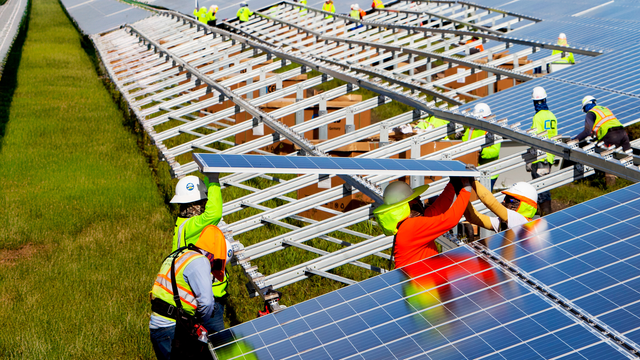Speed, transparency and scalable power solutions
As hyperscale data centers proliferate across America’s landscape, finding innovative ways to meet their sizable power demands increasingly has required sharper focus. Black & Veatch has answered that call, with more than a century of supplying critical power infrastructure that has included substations as an increasingly go-to option for data centers, delivering reliable electrons for those enterprises to thrive.
After the client broke ground for the substation in 2024, Black & Veatch deployed a version of an “open to closed book” contract approach that facilitated the client’s requirements and schedule while providing a target price for the project.
The accounting then got “true upped” as the construction progressed, and the client was presented with the subcontractor bids and took part in the selection process before the price was locked in. The upside: transparency and greater accuracy of project costs with fewer change orders, propelling speed to market for the site that calls for three eventual campuses powered by the two new substations.
The true game-changer remained the shortened construction schedule through Black & Veatch’s nimble approach to procurement, largely in how it got essentials faster. Case in point: When suppliers warned that high-voltage circuit breakers generally wouldn’t arrive for as long as 85 weeks, Black & Veatch received them in just 48 to 65 weeks by requesting staggered deliveries.
Engineering for speed - and carbon reduction
In parallel with its schedule-driven approach, Black & Veatch piloted an enhanced sustainable design strategy to minimize the project's carbon footprint — aligning with the client's broader environmental goals.
During design, engineers conducted a life-cycle assessment (LCA) of major substation components — steel structures, transformers, conductors and concrete — to quantify embedded carbon and identify reduction opportunities. The results informed key design optimizations: selecting a high-voltage conductor with lower aluminum content to reduce manufacturing emissions, specifying cement with 20% fly ash for the control building to cut concrete-related carbon dioxide emissions by approximately 18% and planning for recycling of construction scrap.
To further support transparency and sustainability, the team worked with equipment vendors to source environmental product declarations (EPDs) for critical items. While obtaining EPDs directly from manufacturers proved challenging — a common industry hurdle — this experience led Black & Veatch to invest in third-party data base to streamline future comparisons of material emissions data.
These efforts paid off. Embedded carbon was reduced by an estimated 12 percent — roughly 450 metric tons of carbon dioxide equivalent saved — compared to the base case design. The result: tangible emissions reductions and added client value, demonstrating how proactive sustainability integration can complement speed-to-market and infrastructure reliability






